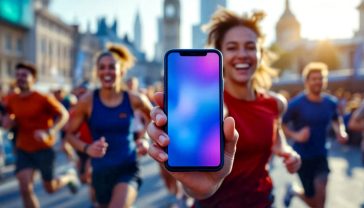10 Best Weather Apps for iPad: Stay Ahead of the Forecast
Find the perfect weather app for your iPad. Our guide reviews the 10 best options for UK users, offering precise forecasts, live radar, and essential alerts to keep you informed.
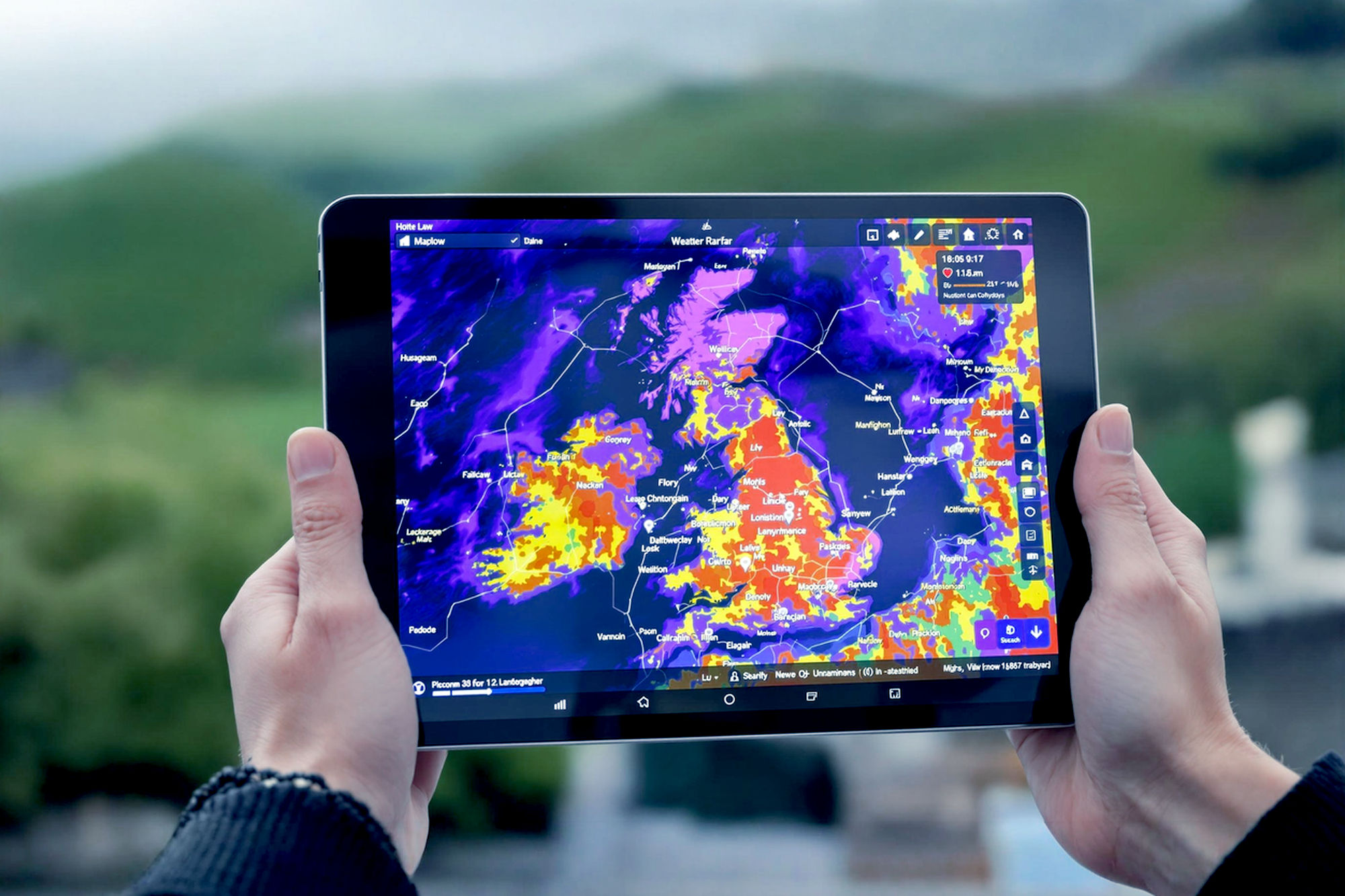
This post may contain affiliate links. If you make a purchase through these links, we may earn a commission at no additional cost to you.
Weather apps play an important role in modern life. Whether you’re planning a weekend getaway, commuting to work, or simply deciding what to wear, having an accurate and reliable weather forecast at your fingertips can make all the difference. For iPad users, the large, vibrant display offers an unparalleled experience for visualising complex weather patterns, radar maps, and detailed forecasts. But with a plethora of options available on the App Store, how do you choose the best weather app for iPad that truly meets your needs?
This comprehensive guide will delve into the world of iPad weather applications, helping you navigate the choices and pinpoint the perfect tool to keep you ahead of the forecast. We’ll explore the essential features to look for, compare ten of the leading apps available in the UK, and provide insights into how to maximise your weather-tracking experience. From hyper-local precipitation alerts to advanced wind maps for outdoor enthusiasts, we’ve got you covered.
Why a Dedicated iPad Weather App Matters
While your iPhone might offer a decent weather glance, the iPad’s larger screen fundamentally transforms the weather-checking experience. It’s not just about bigger numbers; it’s about enhanced data visualisation and immersive interaction. On an iPad, you can truly appreciate the intricate details of a live radar map, track storm systems across a wider geographical area, or scrutinise long-range forecast models with greater clarity.
The expansive display allows for more comprehensive dashboards, presenting multiple data points simultaneously without clutter. You might see the hourly temperature, chance of rain, wind speed, and UV index all on one screen, rather than having to scroll endlessly. This is particularly beneficial for those who rely on detailed weather information for planning, such as farmers, pilots, or outdoor adventurers. Furthermore, many iPad weather apps are specifically optimised to leverage the tablet’s processing power, offering smoother animations, higher-resolution maps, and more responsive interfaces than their smartphone counterparts. The iPad’s screen real estate isn’t just a luxury; it’s a powerful tool for understanding the nuances of atmospheric conditions.
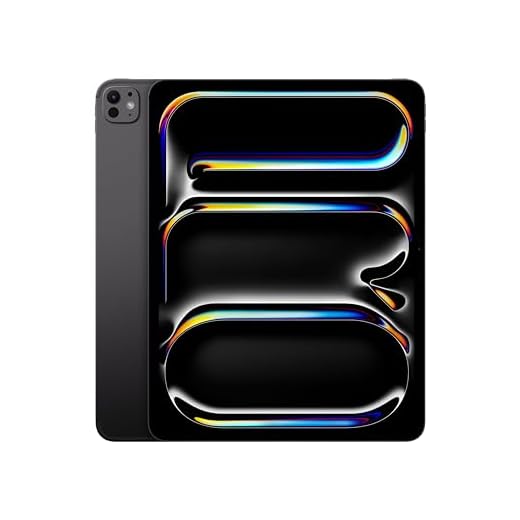
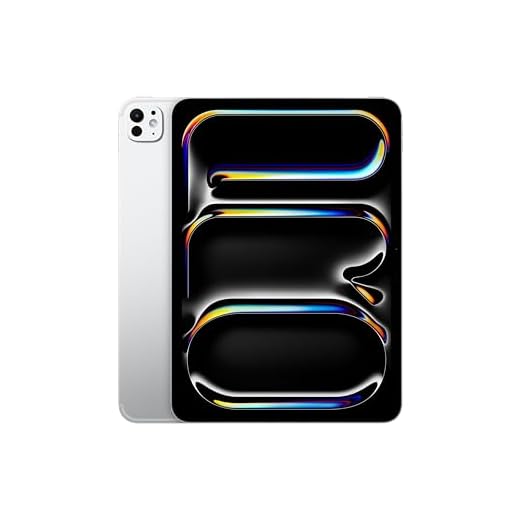
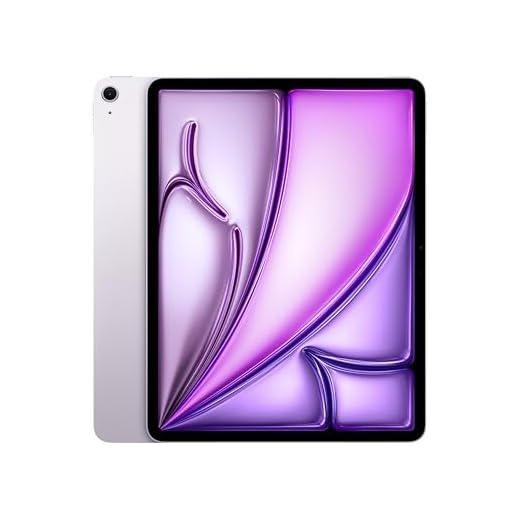
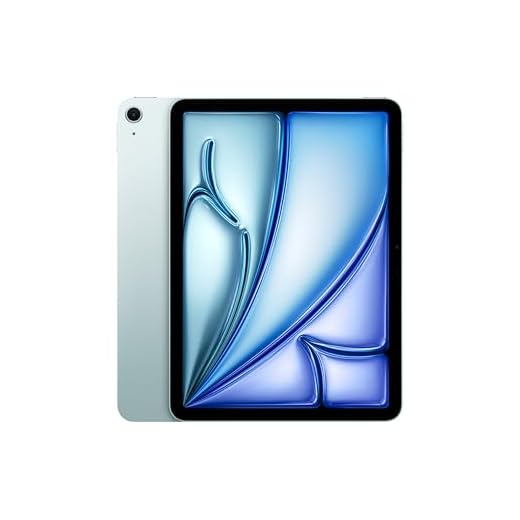

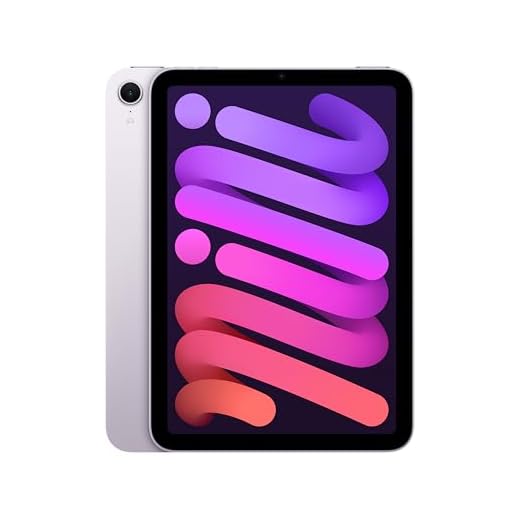
Key Features to Look for in an iPad Weather App
When choosing a weather app for your iPad, it’s crucial to consider a range of features that align with your specific requirements. Not all apps are created equal, and what might be perfect for a casual user could fall short for someone needing highly detailed meteorological data.
Accuracy and Data Sources
The bedrock of any good weather app is its accuracy. This isn’t just about getting the temperature right; it’s about the reliability of precipitation forecasts, wind predictions, and severe weather warnings. Apps draw their data from various sources, including national meteorological services (like the Met Office in the UK), private forecasting companies (e.g., AccuWeather, The Weather Channel), and even crowdsourced information from personal weather stations (as seen with Weather Underground).
A truly accurate app often aggregates data from multiple models and sources, using sophisticated algorithms to provide the most probable forecast. Some apps might specialise in hyper-local forecasting, offering minute-by-minute precipitation predictions for your exact street, which can be incredibly useful for avoiding sudden downpours. Always check reviews and, if possible, compare forecasts from a few apps for your location to gauge their consistent accuracy.
User Interface (UI) and Design
An intuitive and aesthetically pleasing user interface (UI) is paramount, especially on the iPad’s large screen. The best apps present complex weather data in a clear, digestible, and visually engaging manner. Look for:
- Clean Layouts: Information should be easy to find without excessive tapping or scrolling.
- Readability: Clear fonts, appropriate contrast, and well-organised sections.
- Visual Appeal: High-quality graphics, smooth animations for radar and wind patterns, and perhaps even engaging background visuals that reflect current conditions.
- iPad Optimisation: The app should feel native to the iPad, making full use of the screen, supporting landscape and portrait orientations, and offering iPad-specific features like Split View or Slide Over for multitasking.
A well-designed UI enhances the user experience, making checking the weather a quick and enjoyable task rather than a chore.
Detailed Forecasts: Hourly, Daily, and Long-Range
Different situations call for different levels of detail. A comprehensive weather app should offer:
- Hourly Forecasts: Crucial for immediate planning, showing temperature, chance of precipitation, and wind changes over the next 24 hours. These are often presented in an easy-to-read graph or timeline.
- Daily Forecasts: Typically covering the next 7 to 10 days, providing an overview of high/low temperatures, general conditions, and precipitation probability.
- Long-Range Forecasts: Some apps offer predictions stretching 15, 30, or even 45 days into the future. While these become less accurate the further out they go due to the inherent chaotic nature of atmospheric systems (a concept known as the butterfly effect, where small changes in initial conditions can lead to vastly different outcomes over time), they can still be useful for very preliminary planning, such as a holiday or a major outdoor event.
Live Radar and Maps
For many, the live weather radar is the most compelling feature of a weather app. On an iPad, these maps truly come alive. Look for:
- High-Resolution Radar: Clear display of precipitation (rain, snow, hail) movement, allowing you to track storms in real-time.
- Multiple Map Layers: Beyond basic precipitation, advanced apps offer layers for temperature, wind speed and direction, air pressure, cloud cover, and even satellite imagery.
- Future Radar/Precipitation Forecasts: The ability to see where rain or snow is predicted to move in the coming hours is invaluable for avoiding getting caught out. This often involves complex meteorological models that simulate atmospheric conditions.
- Interactive Controls: Easy zooming, panning, and timeline scrubbing to review past radar data or project future movements.
Severe Weather Alerts and Notifications
Safety is paramount. A good weather app acts as your early warning system. Essential features include:
- Customisable Alerts: The ability to receive push notifications for various severe weather events, such as heavy rain, strong winds, thunderstorms, fog, or even snow and ice warnings.
- Government-Issued Alerts: Integration with official meteorological agencies (like the Met Office in the UK) to deliver timely and accurate severe weather warnings. These alerts are often legally mandated and carry significant weight.
- Location-Based Alerts: Notifications that are specific to your current location or saved locations, ensuring you only receive relevant warnings.
- Emergency Information: Some apps provide safety tips or links to emergency services during critical weather events.
Precipitation Tracking (e.g., MinuteCast)
For those who need to know exactly when the rain will start or stop, features like AccuWeather’s “MinuteCast” are game-changers. This technology provides minute-by-minute precipitation forecasts for your precise street address for the next hour or two. It’s built upon highly granular radar data and predictive algorithms, offering a level of detail that traditional hourly forecasts simply can’t match. This is particularly useful for dog walkers, cyclists, or anyone planning a short outdoor activity.
Air Quality and UV Index
Beyond just rain and temperature, modern weather apps often include environmental data that impacts health and wellbeing:
- Air Quality Index (AQI): Provides information on the cleanliness of the air, indicating levels of pollutants like ozone, particulate matter, and carbon monoxide. This is vital for individuals with respiratory conditions or for planning outdoor exercise.
- UV Index: Measures the strength of ultraviolet (UV) radiation from the sun. A high UV index indicates a greater risk of sunburn and skin damage, prompting users to take protective measures. These features draw data from specialised sensors and monitoring stations.
Customisation and Widgets
Personalisation enhances usability. Look for apps that allow you to:
- Customise Display Units: Switch between Celsius/Fahrenheit, miles/kilometres for wind speed, millibars/inches for pressure, etc.
- Rearrange Data: Organise the information displayed on your main screen to prioritise what matters most to you.
- iPad Widgets: Leverage iPadOS widgets to display key weather information directly on your Home Screen or Lock Screen without even opening the app. This offers a quick glance at current conditions or upcoming precipitation.
- Notification Preferences: Fine-tune which alerts you receive and how they are delivered (sound, vibration, banner).
Privacy and Data Handling
In an era of increasing data awareness, understanding an app’s privacy policy is crucial. Weather apps often require access to your location data, which can be sensitive. Consider:
- Location Services Control: Can you set location access to “While Using the App” rather than “Always”?
- Data Sharing: Does the app share your data with third parties for advertising or other purposes? Reputable apps will clearly outline their data handling practices.
- Anonymised Data: Some apps collect anonymised usage data to improve their services without linking it to your personal identity. Always review the app’s privacy policy, usually accessible via its App Store listing.
Battery Efficiency
Weather apps, especially those with live radar and frequent updates, can be battery intensive. While the iPad generally has excellent battery life, a poorly optimised weather app can still contribute to quicker drain. Look for apps that:
- Allow Background Refresh Control: You can usually turn off or limit background app refresh in iPadOS settings to prevent the app from constantly updating when not in use.
- Offer Refresh Rate Options: Some apps let you choose how often data is updated, allowing you to balance freshness with battery consumption.
- Are Well-Coded: Efficiently written apps consume less power, even with advanced features.
By considering these features, you can make an informed decision and select an iPad weather app that provides accurate forecasts and seamlessly integrates into your daily digital life.
Top 10 Best Weather Apps for iPad: Detailed Reviews
Now, let’s dive into our top picks for the best weather apps available for your iPad in the UK, offering a detailed look at what each one brings to the table.
1. Apple Weather (Built-in)
The default Apple Weather app, significantly enhanced in recent iPadOS versions, has become a surprisingly robust option. Leveraging data from Apple Weather (which incorporates elements from Dark Sky’s highly accurate precipitation forecasts) and other national meteorological services, it offers a clean, integrated experience.
Overview
Seamless integration with iPadOS, clean design, and hyper-local precipitation forecasts inherited from Dark Sky technology. It’s often the first weather app many users encounter and, for basic needs, it’s remarkably capable.
Key Features:
- Minute-by-minute precipitation: Provides precise start and end times for rain or snow in the next hour. This feature, powered by the acquisition of Dark Sky, uses highly granular radar data to predict precipitation at a hyper-local level.
- Hourly and 10-day forecasts: Standard detailed breakdowns of temperature, conditions, and precipitation chances.
- High-resolution maps: Interactive maps for temperature, precipitation, and air quality. These maps are visually appealing and easy to navigate.
- Severe weather alerts: Delivers official government-issued warnings directly to your device.
- Air Quality Index (AQI) and UV Index: Integrated health-related metrics.
- Widgets: Comprehensive widget options for the Home Screen and Lock Screen.
- Accuracy & Reliability: Generally very reliable for core forecasts and excellent for short-term precipitation. Its data sources are robust, making it a trustworthy option for most users.
- iPad Optimisation & UI: Superb. The app is designed specifically for iPadOS, making full use of the large display with a multi-column layout. Animations are smooth, and navigation is intuitive. It feels like a natural extension of the iPad itself.
- Pricing Model: Free, built into iPadOS.
Pros:
Cons:
Best for: Casual users, those who prefer simplicity, and anyone needing reliable short-term precipitation forecasts without extra cost or complexity.
2. AccuWeather
AccuWeather is a globally recognised name in weather forecasting, known for its “Superior Accuracy™” and comprehensive data. Its iPad app is a powerhouse of information, catering to a wide audience.
- Overview/Unique Selling Proposition: Renowned for its detailed forecasts, including the patented MinuteCast® technology, and a wealth of meteorological data. It aims to provide highly precise, localised information.
- Key Features:
- MinuteCast®: Provides hyper-local, minute-by-minute precipitation forecasts for the next two hours, detailing type and intensity. This proprietary technology uses a combination of radar, satellite, and ground observations.
- Daily and 45-day forecasts: Offers both short-term and extended outlooks, which can be useful for long-term planning, though accuracy naturally diminishes over such extended periods.
- RealFeel® & RealFeel Shade™ Temperatures: Proprietary indices that attempt to quantify how the temperature actually feels to a person, accounting for factors like humidity, wind, and sun intensity.
- Advanced weather radar: High-resolution radar with future radar projections, satellite imagery, and various overlays (e.g., wind, UV, air quality).
- Severe weather alerts: Timely warnings for a range of hazardous conditions.
- Detailed weather news and videos: Integrated content from AccuWeather’s meteorological team.
- Accuracy & Reliability: Considered one of the most accurate global forecasters, especially for its MinuteCast feature. It consistently ranks high in independent forecast verification studies.
- iPad Optimisation & UI: The iPad app is well-designed, utilising the larger screen effectively for data presentation and map interaction. It’s generally clean, though the free version can be somewhat ad-heavy.
- Pricing Model: Free with ads; offers a Premium subscription for an ad-free experience and additional features.
- Pros:
- Highly accurate and detailed forecasts.
- Excellent MinuteCast feature.
- Comprehensive data, including RealFeel temperatures.
- Available globally with extensive location support.
- Cons:
- Free version is ad-supported, which can be distracting.
- Some advanced features are locked behind a paywall.
- Can feel a bit overwhelming with the sheer amount of information for casual users.
- Best for: Users who demand high accuracy, minute-by-minute precipitation details, and comprehensive meteorological data for both short and long-term planning.
3. The Weather Channel
The Weather Channel app is a popular choice, known for its extensive range of features, including news, videos, and detailed forecasts. It aims to be a one-stop shop for all things weather.
- Overview/Unique Selling Proposition: A comprehensive weather hub offering detailed forecasts, live radar, news stories, and video content, making it more than just a forecast app. It leverages its strong media presence to provide context and reporting.
- Key Features:
- Hourly, 15-day, and future forecasts: Provides a good range of forecast periods.
- Live interactive radar: High-definition radar with future radar capabilities, showing precipitation, wind, and temperature.
- Severe weather alerts: Delivers critical warnings and safety information.
- “Feels Like” temperature: Similar to RealFeel, it accounts for wind and humidity to give a more accurate perception of temperature.
- Air Quality Index (AQI) and UV Index: Standard environmental health metrics.
- Weather news and videos: Integrates news articles and video reports from The Weather Channel’s broadcast team, covering major weather events and climate topics.
- Wellness Forecast: A unique feature that provides insights into how weather conditions might affect allergies, skin health, and breathing conditions.
- Accuracy & Reliability: Generally reliable for standard forecasts and severe weather alerts. Its radar is robust, and the news integration adds value.
- iPad Optimisation & UI: The iPad app is well-laid out, making good use of the screen for maps and detailed information. The inclusion of video content is well-suited for the iPad’s display. However, like AccuWeather, the free version can be quite ad-heavy.
- Pricing Model: Free with ads; offers a Premium subscription for an ad-free experience and extended forecasts.
- Pros:
- Very comprehensive, offering news and videos alongside forecasts.
- Good interactive radar.
- Useful “Wellness Forecast” feature.
- Strong severe weather alerting.
- Cons:
- Frequent and sometimes intrusive ads in the free version.
- Can feel a bit bloated with non-weather content if you just want a quick forecast.
- Some users report higher battery consumption compared to other apps.
- Best for: Users who want a holistic weather experience, including news, videos, and detailed forecasts, and don’t mind ads or are willing to pay for premium.
4. CARROT Weather
CARROT Weather stands out from the crowd with its unique, often sarcastic, and humorous personality. Beyond the witty remarks, it’s a highly capable and customisable weather app.
- Overview/Unique Selling Proposition: Combines highly accurate weather data with a distinct, customisable AI personality that delivers forecasts with snarky, humorous, or even professional commentary. It’s designed to make checking the weather entertaining.
- Key Features:
- Customisable personality: Choose from various levels of snark, profanity, or professionalism for the AI’s commentary. This is achieved through a sophisticated text generation engine that integrates weather data with pre-programmed personality traits.
- Multiple data sources: Allows users to choose their preferred weather data source (e.g., Apple Weather, AccuWeather, Dark Sky API (legacy), AerisWeather, WillyWeather), offering flexibility and potentially better accuracy for specific regions.
- Highly customisable interface: Users can create custom layouts, adding or removing data points, graphs, and maps to suit their preferences. This modular design allows for a truly personalised experience.
- Advanced radar and satellite maps: Detailed visualisations with various overlays.
- Secret locations and achievements: Gamified elements that encourage exploration and engagement.
- Widgets and Apple Watch support: Extensive widget options and a robust Apple Watch app.
- Accuracy & Reliability: Its accuracy largely depends on the chosen data source, but with options like Apple Weather and AccuWeather, it’s generally very reliable. The app itself is well-engineered to present this data effectively.
- iPad Optimisation & UI: Excellent. The iPad app is beautifully designed, making full use of the screen for both data and the AI’s commentary. The customisation options are particularly powerful on the larger display.
- Pricing Model: Free with limited features; requires a Premium Club subscription for full access to data sources, customisation, widgets, and ad-free experience.
- Pros:
- Engaging and entertaining personality.
- Highly customisable interface and data sources.
- Excellent iPad optimisation and widget support.
- Gamified elements add a fun touch.
- Cons:
- The best features are behind a subscription paywall.
- The humour might not appeal to everyone.
- Can be a bit quirky for those who prefer a strictly utilitarian weather app.
- Best for: Users who appreciate a unique, humorous approach to weather, demand high customisation, and are willing to pay for a premium experience.
5. Weather Underground
Weather Underground prides itself on its hyper-local forecasts, powered by a network of over 250,000 personal weather stations (PWS) worldwide. This crowdsourced data provides an incredibly granular view of local conditions.
- Overview/Unique Selling Proposition: Leverages a vast network of personal weather stations to provide hyper-local, real-time weather data, offering unparalleled accuracy for specific neighbourhoods and microclimates.
- Key Features:
- PWS network data: Displays real-time data from nearby personal weather stations, including temperature, humidity, wind, and precipitation. This unique data source provides highly localised insights.
- Interactive radar and satellite maps: Advanced maps with numerous layers, including temperature, wind, dew point, and a “Smart Forecast” that predicts weather for outdoor activities.
- “Feels Like” temperature and UV Index: Comprehensive environmental metrics.
- Severe weather alerts: Timely notifications for hazardous conditions.
- Air Quality Index (AQI) and pollen data: Useful for health and allergy sufferers.
- Webcams: Access to live webcams from around the world, often linked to PWS locations, offering a real-time visual of conditions.
- Detailed historical data: Provides access to past weather conditions, which can be useful for analysis or planning.
- Accuracy & Reliability: Excellent for hyper-local accuracy due to its PWS network. However, the reliability can vary depending on the density and quality of PWS in a given area. Where PWS are abundant, it’s exceptionally accurate.
- iPad Optimisation & UI: The iPad app is well-designed, with a clear layout that makes good use of the larger screen for maps and detailed data tables. It’s generally intuitive, though the sheer amount of data can take some getting used to.
- Pricing Model: Free with ads; offers a Premium subscription for an ad-free experience, extended forecasts, and advanced radar features.
- Pros:
- Unmatched hyper-local accuracy due to PWS network.
- Rich, detailed data for weather enthusiasts.
- Useful webcams and historical data.
- Comprehensive map layers.
- Cons:
- Accuracy can be inconsistent in areas with sparse PWS coverage.
- Free version contains ads.
- The interface can feel a bit cluttered due to the abundance of information.
- Best for: Weather enthusiasts, outdoor adventurers, and anyone who needs highly localised, real-time data, especially in areas with good PWS coverage.
6. MyRadar
MyRadar is renowned for its speed and simplicity, focusing primarily on delivering a fast, animated weather radar. It’s a go-to for quickly checking storm movements.
- Overview/Unique Selling Proposition: A lightning-fast, highly visual radar app designed for quick checks of real-time precipitation and storm tracking. It prioritises immediate visual information over detailed textual forecasts.
- Key Features:
- Fast, animated radar: Provides smooth, high-resolution radar loops showing precipitation movement. This is its core strength, and it excels at it.
- Future radar: Offers projections of where precipitation will move in the coming hours.
- Severe weather alerts: Delivers push notifications for official warnings.
- Optional layers: Includes layers for temperature, wind (including jet stream), fronts, and even earthquake data (some requiring subscription).
- Hurricane tracking: Dedicated features for tracking tropical storms and hurricanes, including forecast cones (often a premium feature).
- Rain alerts: Can send alerts up to an hour in advance when rain is expected at your precise location.
- Accuracy & Reliability: Highly accurate for radar and real-time precipitation tracking. Its forecasts are derived from standard models, and while good, its main strength is the visual radar.
- iPad Optimisation & UI: Excellent. The app is built for speed and visual clarity on the iPad’s large screen. The radar map dominates the interface, making it very easy to quickly assess conditions. It’s responsive and fluid.
- Pricing Model: Free with basic features; offers in-app purchases and subscriptions for advanced layers (e.g., hurricane tracking, aviation charts, ad-free).
- Pros:
- Extremely fast and fluid radar display.
- Simple, intuitive interface for quick checks.
- Reliable severe weather alerts.
- Good for tracking rapidly changing conditions.
- Cons:
- Less emphasis on detailed textual forecasts compared to other apps.
- Many useful layers and features are behind a paywall.
- Can be too minimalist for users who want comprehensive data at a glance.
- Best for: Users who primarily need a quick, reliable radar to track storms, especially those in areas prone to severe weather or who engage in activities sensitive to immediate precipitation.
7. Met Office Weather Forecast
For UK users, the official Met Office Weather Forecast app is an indispensable tool, providing highly accurate and localised forecasts directly from the UK’s national weather service.
- Overview/Unique Selling Proposition: The official app of the UK’s national meteorological service, providing highly accurate, localised forecasts and severe weather warnings specifically for the UK. It’s the definitive source for UK weather.
- Key Features:
- UK-focused forecasts: Provides detailed hourly and 7-day forecasts specifically for locations across the UK.
- National Severe Weather Warnings: Delivers official warnings for rain, wind, snow, ice, thunderstorms, and fog, with colour-coded severity levels (Yellow, Amber, Red). These warnings are crucial for safety and planning.
- Interactive rain radar: Shows real-time precipitation across the UK, with a 24-hour animated forecast.
- UV Index and pollen data: Relevant health information for the UK.
- Air Quality: Provides current and forecast air pollution levels.
- Customisable locations: Save and manage multiple UK locations.
- Accuracy & Reliability: Extremely high for the UK. As the official national weather service, its forecasts are based on sophisticated numerical weather prediction models and extensive observational data specific to the region.
- iPad Optimisation & UI: The iPad app is clean and functional, designed to present UK-specific data clearly. While not as flashy as some international apps, its focus on clarity and official warnings is commendable. It makes good use of the larger screen for maps and detailed forecasts.
- Pricing Model: Free.
- Pros:
- Highest accuracy for UK forecasts and warnings.
- Official source for national severe weather warnings.
- Clean, ad-free interface.
- Excellent for planning within the UK.
- Cons:
- Primarily focused on the UK, so less useful for international travel.
- Lacks some of the advanced, niche features found in global apps (e.g., highly detailed wind models for sailing).
- UI is functional but not as visually dynamic as some competitors.
- Best for: All residents and visitors in the UK who need the most accurate, official, and localised weather information and warnings.
8. BBC Weather
Another excellent choice for UK audiences, the BBC Weather app provides reliable forecasts with a familiar and trustworthy interface, drawing on Met Office data.
- Overview/Unique Selling Proposition: Provides clear, accessible, and reliable weather forecasts for the UK and beyond, presented with the BBC’s trusted editorial voice. It’s known for its simplicity and ease of use.
- Key Features:
- Hourly and 10-day forecasts: Detailed breakdowns for temperature, precipitation, wind, and “feels like” temperature.
- Chance of precipitation: Clear graphical representation of rain probability.
- Interactive rain radar: Shows current and recent precipitation for the UK.
- UV Index, pollen, and pollution forecasts: Comprehensive environmental data.
- Sunrise and sunset times: Practical information for daily planning.
- Global locations: While strong in the UK, it also offers forecasts for locations worldwide.
- Accuracy & Reliability: Very reliable for UK forecasts, as it largely uses data from the Met Office. Its international forecasts are also generally good.
- iPad Optimisation & UI: The iPad app is straightforward and easy to navigate, presenting information clearly on the larger screen. It’s designed for broad appeal, focusing on essential information without overwhelming the user.
- Pricing Model: Free.
- Pros:
- Trusted and familiar brand.
- Clear, uncluttered interface.
- Reliable forecasts for the UK and international locations.
- Completely free and ad-free.
- Cons:
- Radar is less advanced than some dedicated radar apps.
- Lacks some of the deep meteorological data or highly specific features found in more niche apps.
- Less customisable than some competitors.
- Best for: General users in the UK and those who prefer a simple, reliable, and ad-free weather app from a trusted source.
9. Windy.com
Windy.com is a powerful and visually stunning weather app that goes beyond basic forecasts, offering highly detailed wind, wave, and atmospheric data, making it a favourite among outdoor sports enthusiasts and professionals.
- Overview/Unique Selling Proposition: A highly visual and powerful tool for visualising global wind, wave, and weather patterns. It’s particularly popular with sailors, surfers, pilots, and anyone needing advanced atmospheric data.
- Key Features:
- Stunning animated wind map: Its signature feature, showing global wind patterns with beautiful, fluid animations. This uses complex fluid dynamics models to render wind flow.
- Numerous forecast models: Access to various global and local forecast models (e.g., GFS, ECMWF, ICON, NAM), allowing users to compare predictions and assess uncertainty. This is a highly technical feature for advanced users.
- Over 40 map layers: Beyond wind, it offers layers for temperature, precipitation, clouds, waves, swell, air pressure, air quality, CAPE (Convective Available Potential Energy for thunderstorms), and much more.
- Webcams and meteograms: Integrates live webcams and detailed meteograms (graphs showing forecast parameters over time for a specific location).
- Point forecasts: Provides detailed forecasts for any point on the map.
- Satellite and radar: Global satellite imagery and local radar for many regions.
- Accuracy & Reliability: Highly accurate for its specialised data (wind, waves) and provides access to raw model data, allowing advanced users to interpret forecasts themselves. Its general weather forecasts are also very good.
- iPad Optimisation & UI: Exceptional. The iPad’s large screen is perfect for Windy.com’s immersive, map-centric interface. The animations are smooth, and navigating through layers and models is intuitive despite the app’s depth. It’s a truly powerful visual tool.
- Pricing Model: Free with most features; offers a Premium subscription for higher resolution data, more frequent updates, and an ad-free experience.
- Pros:
- Unparalleled visualisations of wind and weather patterns.
- Access to multiple global forecast models.
- Extensive range of map layers for niche interests.
- Excellent for outdoor sports, aviation, and marine activities.
- Cons:
- Can be overwhelming for casual users due to the sheer amount of data.
- Some of the most detailed data requires a subscription.
- Not primarily designed for simple “what’s the temperature” checks.
- Best for: Sailors, surfers, pilots, paragliders, drone operators, professional meteorologists, and anyone who needs advanced, highly visual atmospheric data.
10. WeatherPro
WeatherPro, developed by MeteoGroup, is a long-standing favourite for its professional-grade data and detailed forecasts, often considered a more serious alternative to consumer-focused apps.
- Overview/Unique Selling Proposition: Offers professional-grade weather forecasts and data, including high-resolution radar, satellite imagery, and specific information for various outdoor activities. It’s known for its reliability and depth of information.
- Key Features:
- Detailed 7-day forecasts: Provides comprehensive hourly and daily forecasts for millions of locations worldwide.
- High-resolution radar and satellite: Offers animated radar for many countries and global satellite imagery.
- Temperature maps and precipitation types: Visualisations for temperature distribution and specific precipitation types (e.g., rain, snow, freezing rain).
- Wind, pressure, and humidity graphs: Detailed graphical representations of key meteorological parameters.
- “Weather Alerts” for severe conditions: Provides warnings for extreme weather events.
- Optional layers for specific activities: Includes features like “Ski Weather” (snow depth, lift status) and “Beach Weather” (UV Index, water temperature).
- MeteoGroup’s own forecast models: Relies on proprietary models for its data, which are highly regarded.
- Accuracy & Reliability: Highly accurate and reliable, drawing on MeteoGroup’s extensive meteorological expertise and proprietary models. It’s a solid choice for consistent, trustworthy forecasts.
- iPad Optimisation & UI: The iPad app is well-structured and professional in appearance, making good use of the larger screen for presenting detailed graphs and maps. It’s designed for users who want serious weather data without unnecessary frills.
- Pricing Model: Free with limited features; offers a Premium subscription for full access to features like hourly forecasts for 14 days, advanced radar, and more layers.
- Pros:
- Professional-grade, reliable forecasts.
- Detailed graphs and data for various parameters.
- Good high-resolution radar and satellite imagery.
- Specific features for outdoor activities (e.g., ski weather).
- Cons:
- Many advanced features are behind a subscription.
- UI can feel a bit less modern or visually engaging than some newer apps.
- Not as strong on hyper-local minute-by-minute precipitation as Apple Weather or AccuWeather.
- Best for: Users who need robust, professional-grade weather data, particularly for planning outdoor activities, and are willing to pay for a subscription for comprehensive features.
Up & Coming App Highlight: Weatherzone
While not included in our top 10, Weatherzone is a highly-regarded weather app, particularly recognized by the World Meteorological Organization (WMO) for its data quality, live updates, reliability, and user interface. Originally from Australia, Weatherzone has expanded its reach, offering detailed forecasts and robust features that make it a strong contender for anyone seeking comprehensive weather information on their iPad.
Overview Weatherzone provides precise weather forecasting to help users make confident decisions daily. It offers real-time updates and keeps you informed with immersive radar and satellite maps, alongside detailed hourly and 14-day forecasts. Its strength lies in its advanced gridded forecast system, aiming for highly accurate, localized updates.
Key Features:
- Hourly and 14-day forecasts: Provides detailed breakdowns of temperature, conditions, rain chances, wind, humidity, UV ratings, and sunrise/sunset times.
- Extensive UK rain and snow radar: Visual radar maps to track precipitation.
- High-resolution satellite imagery and lightning maps: Offers comprehensive visual insights into weather systems.
- Wind streamlines: Animated streamlines to visualize wind direction.
- Local weather warnings: Delivers official alerts for severe weather, including flood alerts and air quality.
- Hourly rain amounts: A recent update adds hourly rain intensity to graphs, including a snow icon for potential snowfall.
- Widgets: Native weather widgets for quick glances at daily or hourly forecasts.
- Moon calendar: Tracks current moon phases, including moon rise and set times.
Accuracy & Reliability:
Weatherzone is recognized by the WMO for its data quality and reliability. It leverages an advanced gridded forecast system for accurate local weather. While some user reviews (particularly in newer regions like the USA) have noted occasional inaccuracies or location issues, its core strength lies in its comprehensive data sources and consistent updates.
iPad Optimisation & UI:
The app is available on iOS, including iPad. It offers a clean and intuitive user interface with easy navigation, providing detailed information in a clear format. Its mapping features are particularly immersive, allowing users to visualize weather patterns effectively. The app consistently receives updates to enhance its features and user experience.
Pricing Model:
Weatherzone operates on a freemium model:
- Weatherzone Basic: Free, personalized experience with essential features.
- Weatherzone Ad-Free: Removes third-party advertising for a cleaner experience (available via in-app purchase, e.g., AUD $0.50/month billed annually).
- Weatherzone Pro: Unlocks more advanced features for enthusiasts and professionals, including additional forecast data sources, multi-model chart comparisons, and Stormtracker tools (available via in-app purchase, e.g., AUD $6.00/month billed monthly or annually, with a 30-day free trial).
Pros:
Cons:
Best for: Users who need highly detailed and localized weather information, appreciate comprehensive mapping features, and value an app recognized for its data accuracy. It’s also suitable for those willing to consider a subscription for an ad-free experience or more advanced meteorological data.
Choosing the Right Weather App for Your Needs
Selecting the ideal weather app for your iPad isn’t a one-size-fits-all decision. It truly depends on how you intend to use the information. Here’s how to narrow down your choices:
Consider Your Usage: Casual, Outdoor, or Professional
- Casual User: If you just need to know if you’ll need an umbrella tomorrow or what the temperature is, the Apple Weather app is likely more than sufficient. Its simplicity and integration are hard to beat. BBC Weather is another excellent free, straightforward option for UK residents.
- Outdoor Enthusiast: For hikers, cyclists, sailors, or anyone whose plans are heavily influenced by weather, apps like Weather Underground, Windy.com, or WeatherPro offer the granular data you need. Look for detailed wind maps, precipitation forecasts, and specialised layers (e.g., wave height, pollen). These apps provide the technical details necessary to make informed decisions about your outdoor pursuits.
- Professional/Advanced User: If you’re a meteorology student, a pilot, or someone who needs to analyse raw model data and compare different forecast outputs, Windy.com and RadarScope (though not explicitly covered in the top 10, it’s a niche professional radar app) are designed for this level of detail. They provide access to the underlying numerical weather prediction models and advanced visualisations.
Budget: Free vs. Premium
- Free Apps: Many excellent apps, like Apple Weather and BBC Weather, are entirely free and ad-free, offering solid core functionality. Others, like AccuWeather, The Weather Channel, and Weather Underground, offer free versions with ads, providing a good taste of their features before you commit to a subscription. These are great for general use and for testing out an app’s interface.
- Premium/Subscription Apps: If you require advanced features, an ad-free experience, or access to more precise, higher-resolution data, a paid subscription might be worth the investment. Apps like CARROT Weather, Windy.com, and WeatherPro offer compelling premium tiers that unlock their full potential. Consider how much you value the extra accuracy, customisation, and uninterrupted experience. For example, a professional pilot might find the cost of a premium aviation weather app negligible compared to the safety benefits it provides.
Prioritise Features: Radar, Alerts, Specific Data
Make a list of your absolute must-have features.
- Radar: If tracking storms is your priority, MyRadar, Windy.com, or the radar features in AccuWeather and The Weather Channel are strong contenders. Look for high-resolution, animated radar with future projections.
- Severe Alerts: For safety, ensure your chosen app provides timely and reliable severe weather alerts, ideally from official sources. The Met Office app is unparalleled for UK warnings.
- Hyper-local Precipitation: If you need to know exactly when the rain will start or stop at your location, Apple Weather and AccuWeather’s MinuteCast are the best options.
- Specific Data: If you need niche data like wave heights for surfing, pollen counts for allergies, or detailed wind forecasts for sailing, ensure the app you choose explicitly offers these layers or features. Windy.com is excellent for this.
Privacy Preferences
Consider how comfortable you are with sharing your location data. Apple’s built-in app has strong privacy assurances. For third-party apps, always review their privacy policies within the App Store listing to understand what data they collect and how it’s used. Some apps might collect anonymised usage data to improve services, while others might use it for targeted advertising.
By carefully evaluating these factors, you can make an informed decision and select an iPad weather app that not only provides accurate forecasts but also perfectly aligns with your lifestyle and specific needs.
Maximising Your iPad Weather App Experience
Once you’ve chosen your preferred weather app, there are several ways to optimise its performance and integrate it seamlessly into your iPad workflow.
Understanding Widgets
iPadOS widgets are a powerful way to get quick weather updates without even opening the app. They come in various sizes and can be placed directly on your Home Screen or accessed via the Today View.
- Home Screen Widgets: These live directly on your main app pages, providing glanceable information. A small widget might show current temperature and conditions, while a larger one could display an hourly forecast graph or a mini radar map.
- Lock Screen Widgets: Introduced in recent iPadOS versions, these allow you to see essential weather data directly on your Lock Screen, often alongside the time and date.
- Customisation: Most good weather apps offer multiple widget styles and allow you to customise the data they display. Experiment with different sizes and information layouts to find what works best for you. For example, you might have a small widget for current conditions and a larger one for a 5-day forecast.
- Efficiency: Widgets update in the background, consuming some battery, but they save you the time and effort of opening the full app. This makes them incredibly efficient for routine checks.
Managing Notifications
Notifications are key for severe weather alerts and timely updates. However, too many notifications can be disruptive.
- Customise Alert Types: Go into your chosen weather app’s settings (and potentially iPadOS Settings > Notifications) to specify which types of alerts you want to receive. Do you need a notification for every light shower, or just for severe thunderstorms and heavy rain warnings?
- Location-Specific Alerts: Ensure your alerts are set for your current location and any saved favourite locations (e.g., home, work, a holiday destination). This prevents irrelevant notifications.
- Quiet Hours/Focus Modes: Leverage iPadOS Focus Modes to silence weather notifications during specific times (e.g., overnight, during meetings) or when you’re engaged in certain activities. This allows you to receive critical alerts when needed, but prevents constant interruptions.
- Sound and Haptics: Decide if you want audible alerts or just visual banners. For severe weather, an audible alert is often advisable.
Location Services and Privacy Settings
Weather apps rely heavily on Location Services to provide accurate local forecasts. It’s important to manage these settings carefully for both functionality and privacy.
- “While Using the App” vs. “Always”: Most weather apps offer the option to access your location “While Using the App” or “Always.” Choosing “While Using the App” is generally more privacy-friendly, as it prevents the app from tracking your location continuously in the background. However, “Always” might be necessary for features like real-time precipitation alerts for your current moving location.
- Precise Location: iPadOS offers a “Precise Location” toggle for apps. Turning this on provides the most accurate forecast for your exact spot, using GPS, Wi-Fi, and cellular data. If you’re concerned about hyper-specific tracking, you can turn this off for a more general location.
- Review App Privacy Policies: Before granting location access, quickly review the app’s privacy policy (usually linked in the App Store description) to understand how your location data is used and if it’s shared with third parties. Apple’s built-in Weather app, for instance, states that your location data for forecasts is not associated with your identity.
Optimising Battery Life
While iPads generally have long battery life, some weather apps can be more power-hungry than others, especially those with constant background updates or live radar.
- Background App Refresh: In iPadOS Settings > General > Background App Refresh, you can selectively turn off background refresh for specific weather apps. This prevents them from fetching new data when you’re not actively using them. While this saves battery, it means your widgets might not always be perfectly up-to-date, and you might not receive real-time alerts unless the app is open.
- Widget Usage: While convenient, having many large, frequently updating weather widgets can contribute to battery drain. Consider using fewer widgets or smaller ones if battery life is a significant concern.
- Location Services Frequency: If an app offers it, reduce the frequency of location updates within its settings. Less frequent location pings mean less battery consumption.
- Close Apps: If an app is known to be a battery hog (you can check battery usage in iPadOS Settings > Battery), manually close it from the App Switcher when you’re finished using it, rather than leaving it running in the background.
By taking these steps, you can ensure your chosen iPad weather app provides you with timely, accurate information without unnecessarily draining your device’s battery or compromising your privacy.
Conclusion
Choosing the best weather app for your iPad is a personal journey, influenced by your daily needs, interests, and how much detail you crave. From the elegant simplicity of the built-in Apple Weather app, now supercharged with Dark Sky’s minute-by-minute precipitation forecasts, to the professional-grade data visualisations of Windy.com and WeatherPro, there’s an option tailored for every user in the UK.
Whether you’re a casual observer needing a quick glance at the day’s temperature, an outdoor enthusiast meticulously planning your next adventure around wind speeds and wave heights, or a professional relying on precise meteorological models, the iPad’s large, immersive display truly enhances the weather forecasting experience. Apps like AccuWeather and The Weather Channel offer comprehensive data with a wealth of features, while UK-specific options like the Met Office Weather Forecast and BBC Weather provide unparalleled local accuracy and official warnings. For those who appreciate a dose of personality, CARROT Weather delivers reliable forecasts with a unique, humorous twist.
Ultimately, the power of these applications lies not just in their ability to predict the future, but in empowering you to make informed decisions, stay safe during severe weather, and plan your activities with confidence. Take the time to explore a few options, consider their unique strengths, and customise them to fit your lifestyle. By doing so, you’ll ensure your iPad remains your most reliable companion for staying ahead of the forecast, come rain or shine.



